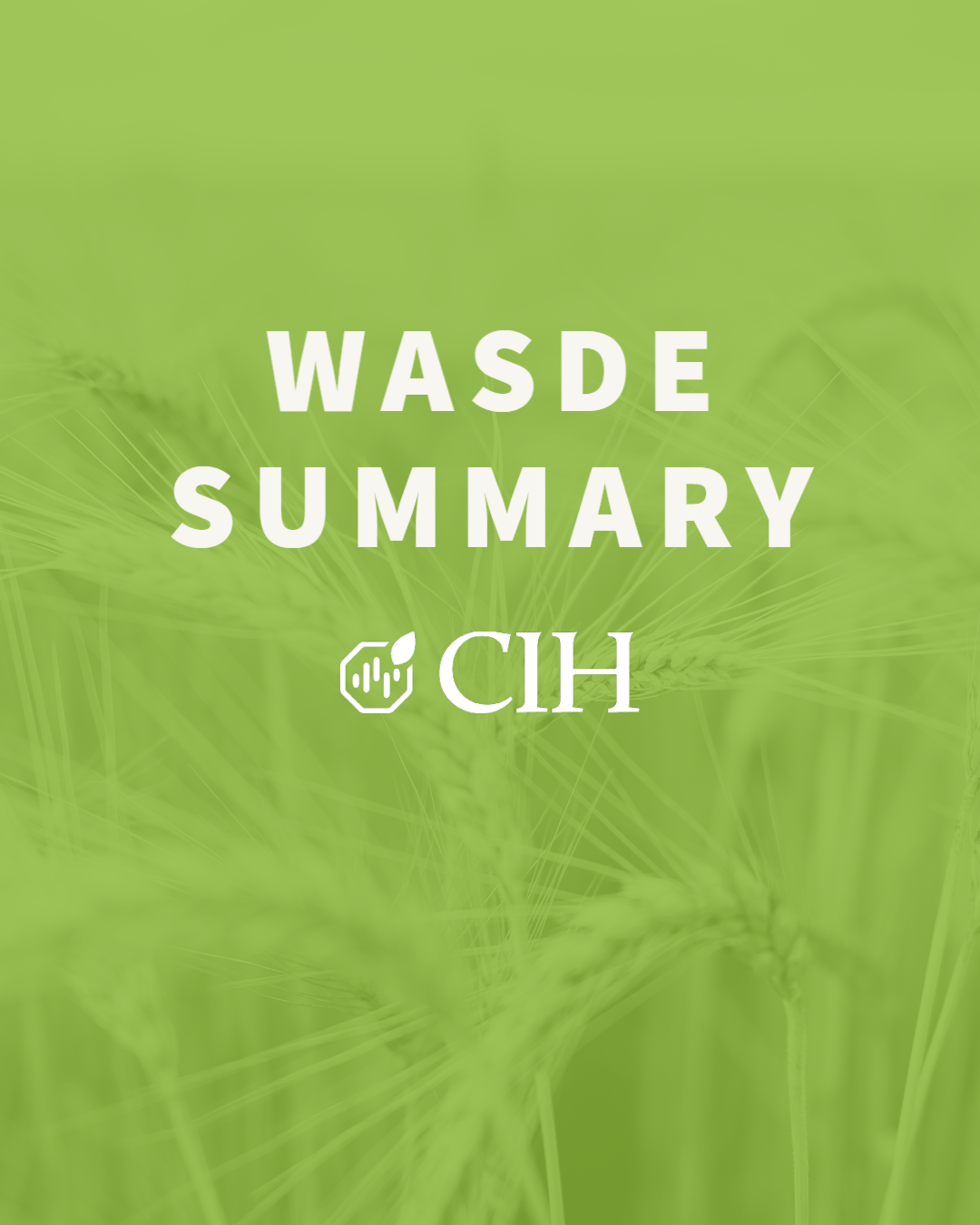
February 11, 2025
The February WASDE report was viewed as neutral for corn, beans and wheat. Market attention will remain focused on South American production for further degradation and delayed corn planting, crop insurance price discovery, ongoing (potential) tariff disruptions and the March Prospective Plantings Report.
Corn
The 2024/25 domestic corn balance sheet was left unchanged with the only adjustment being a 10-cent increase to the projected season-average corn price due to recently higher cash prices. The trade may take this lack of movement as negative or disappointing considering some were looking for USDA to raise both corn-use for ethanol as well as exports due to the current sales commitments. Offsetting the negativity was a cut to both Argentine and Brazilian corn production of 2 million metric tons combined (1 MMT each). USDA specifies the reason for the cuts, “Production is reduced for Argentina reflecting a cut in yield, as heat and dryness during January and into early February reduce yield prospects for early-planted corn in key central growing areas. For Brazil, the corn production forecast is reduced as slow second-crop planting progress in the Center-West lowers yield prospects.”
Recent history has shown that a stocks-to-use ratio this low (at this time of year) remains low for the remainder of the crop year:

Export sales totals are on pace to meet (possibly exceed) current USDA expectations:

Soybeans
The 2024/25 domestic soybean balance sheet was also left unchanged with the only adjustment being a 10-cent decrease to the projected season-average bean price. The trade was looking for USDA to report ending stocks in this area (382 million expected vs. 380 reported). Adding to the neutrality of the report was anticipated movements on the Argentine/Brazilian crops. USDA estimates Argentina’s bean crop 3 million metric tons lower than last month (49 MMT vs 52 previous) and maintains the Brazilian crop forecast at 169 MMT. USDA states, “Production is reduced for Argentina and Paraguay due to persistent heat and dryness during January. Brazilian soybean production is unchanged at 169.0 million tons. Beneficial weather in the Center-West is boosting soybean prospects, but drier weather in the south accelerated soybean development at the expense of yields.”
Domestic stocks-to-use ratio still expected to be marginally higher year-over-year:

Major exporter ending stocks highest since 2019/20 and third largest over the past 15 years:

Wheat
The 2024/25 domestic wheat balance sheet called for a slightly higher usage for food (4-million-bushel increase) and lowers domestic ending stocks by a like amount. Last month’s Winter Seedings report showing an expected 2% increase in acres y/y has had little impact on price with many market participants considering the current dryness being witnessed in major growing areas. While it is still early, this along with the possible impact from harsh temperatures last month will be watched closely as the crop exits dormancy this spring. Of major note on the global side is a reduction to expected Chinese imports of 2.5 MMT on “…a continued sluggish import pace.”
Domestic ending stocks pegged at highest level since 2020/21:

Global ending stocks forecast at lowest level since 2015/16:
